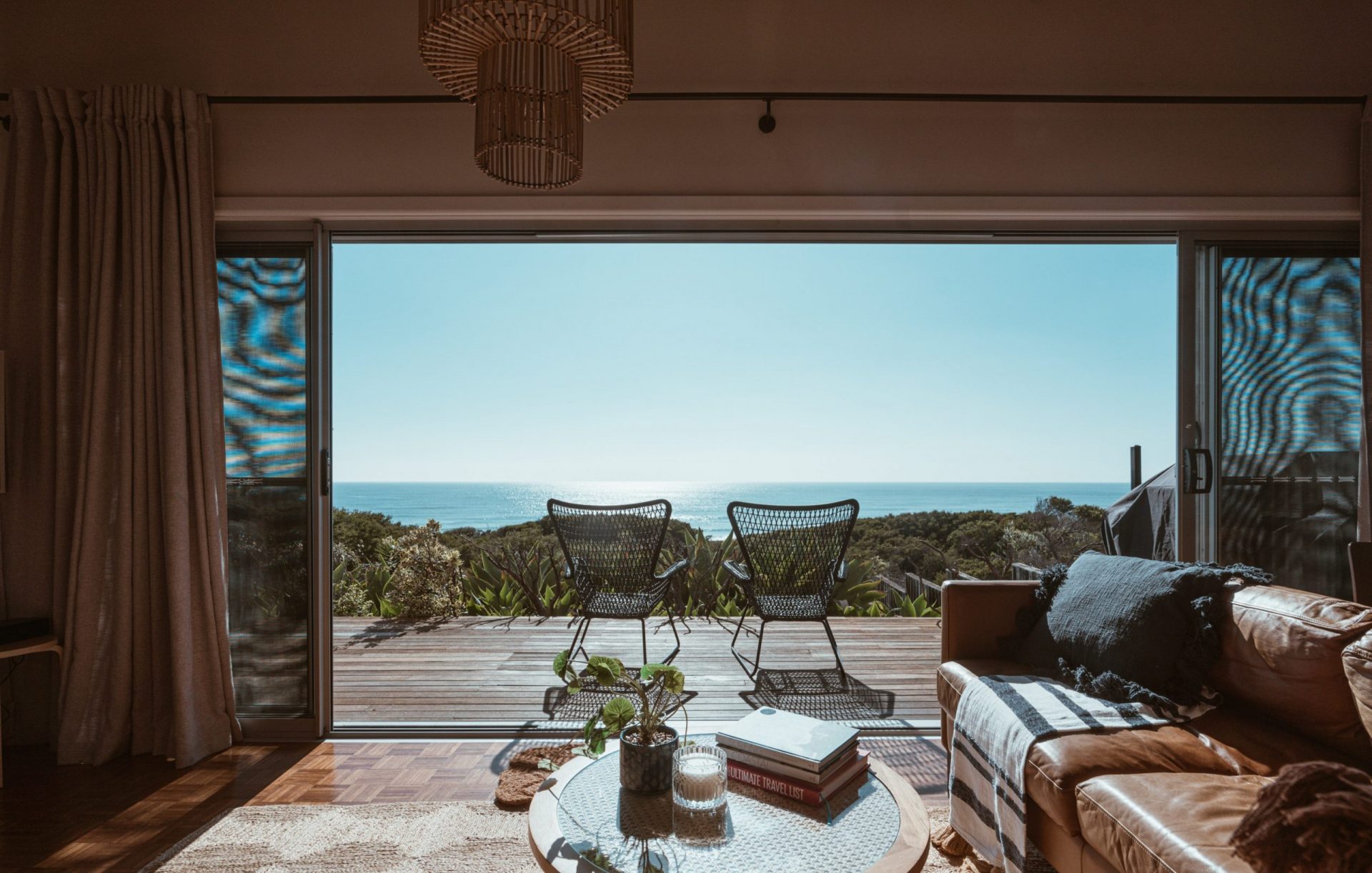The living room is the nerve centre of any home. It is the place where the family gathers, where guests are entertained, and where relaxation and entertainment are enjoyed. When the living room is integrated with the dining room and kitchen, its design becomes even more crucial, as it must harmonise with the rest of the space and, at the same time, fulfil its main function: to be a comfortable and welcoming place for everyone.

Open space design:
- Flow and connectivity: In an open concept design, the living room is not an isolated space, but part of a larger whole that includes the dining room and kitchen. The key is to ensure that these spaces flow naturally into each other, allowing for easy circulation and barrier-free interaction. This is achieved through the intelligent arrangement of furniture and the choice of colours and materials that unify the design.
- Efficient zoning: Even if the space is open-plan, it is important to visually define the different areas. Rugs, hanging lamps and strategically placed furniture can help create ‘zones’ within an open space, differentiating the living room from the dining room and kitchen, without the need for dividing walls. This not only organises the space, but also adds a sense of order and purpose to each area.
Style and cohesion:

- Coordinated colour palette: A consistent colour palette is essential in an open-plan space to maintain visual harmony. Neutral tones or a selection of complementary colours can unify different areas, while colour accents in the living room can add personality and warmth without breaking cohesion.
- Materials and textures: The choice of materials and textures is key to creating a welcoming and cohesive environment. Combining wood, soft textiles and smooth surfaces can bring warmth and comfort, while repeating certain materials throughout the living room, dining room and kitchen, such as using wood in furniture or marble on surfaces, reinforces the unity of the space.
Functionality and comfort:

- Multifunctional furniture: In an open space, furniture should be both aesthetic and functional. Modular sofas, coffee tables with storage and open shelving can be allies in the living room, offering practical solutions without sacrificing style. In addition, these pieces of furniture can help to visually delineate the living room from the rest of the space.
- Integrated technology: The modern living room often incorporates technology for entertainment, such as televisions, sound systems and smart devices. Integrating these elements in an unobtrusive way is essential to maintain aesthetic balance. Furniture with hidden compartments for cables or storage systems for devices can be very useful.

Adequate lighting:
- Lighting layers: Lighting in an open space should be versatile to suit different activities. It is advisable to combine general lighting, such as ceiling or recessed lighting, with task lighting in specific areas, such as reading lamps by the sofa, and ambient lighting to create a cosy atmosphere at night. Lighting can also be used to accentuate decorative elements and enhance the architecture of the space.
- Natural light: Making the most of natural light is essential in open spaces. Large windows, glass doors or skylights can flood the living room with natural light, making the space feel larger and airier. Light curtains or adjustable blinds allow you to control light and maintain privacy without sacrificing brightness.

Connection with the outside world:
- Smooth transition: If the living room has direct access to the outdoors, such as a patio or garden, it is important that the design facilitates a seamless transition between indoors and outdoors. Sliding glass doors, flooring that continues outdoors or outdoor furniture that complements the interior style can make the space feel even more spacious and connected to nature.

Living room design, especially in open spaces, requires careful planning to achieve a balance between functionality, comfort and style. Every element, from the layout of the furniture to the choice of colours and materials, plays a crucial role in creating a welcoming and cohesive environment. In a home where the living room is integrated with the dining room and kitchen, it is essential that these spaces work together to form a harmonious whole that reflects the lifestyle and needs of those who live there. Remember, a well-designed living room is more than just a space to relax; it is the heart of the home.